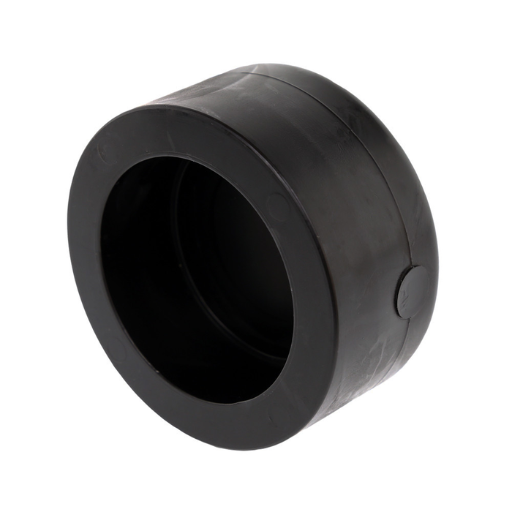Essential elements in piping systems are High-Density Polyethylene (HDPE) socket fusion end caps, which offer reliable seals for different applications from water distribution to industrial processes. The article is an all-inclusive discourse on HDPE fusion end caps, highlighting their purpose, advantages, and installation method known as the socket fusion process. We will discuss the benefits of using HDPE materials and the factors to consider when selecting an end cap for your project. We will also provide step-by-step guidance on how to perform socket fusion. By the time this paper is over, readers will have a better idea of HDPE socket fusion end caps and their importance in ensuring that pipes work correctly.
What is a Socket Fusion End Cap?
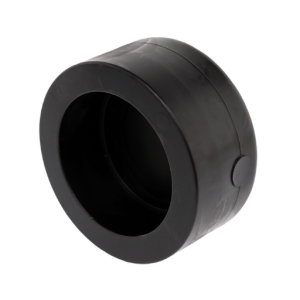
Image source: https://hdpesupply.com/
A fitting that closes a pipe at one end in a piping system can be called a socket fusion end cap, mainly made from high-density polyethylene (HDPE). It is intended to be attached to the pipe through the socket fusion technique, where both ends of the cap and the pipe are heated at a specific temperature and then joined together, creating a solid leak-proof connection. Such an end cap is often used in water supply networks and various industrial applications due to its strength and corrosion resistance, even under extreme conditions where it needs repairing.
Socket Fusion End Cap: Definition and Uses
Pipe systems, specifically those involving high–density polyethylene (HDPE) materials, depend on socket fusion end caps as indispensable components. They are used to close the open ends of pipes so that they don’t leak and are isolated from the environment.
The predominant application areas for socket fusion end caps include water treatment, irrigation, and chemical processing, among other industries. Their popularity is mainly due to how easily they can be installed, as they give excellent results when joining different parts under high pressure or temperature through socket fusion. Moreover, HDPE socket fusion end caps are an alternative to traditional metal fittings because they have a long life and are corrosion-resistant. This adaptability ensures that they become an integral part of any piping design inclined toward reliability and efficiency.
How Socket Fusion Works with End Caps
Socket fusion is the method used for welding HDPE pipes and fittings such as end-caps by heating their surface to a specific temperature. At the beginning of this procedure, the tubing and cap must be prepared to ensure no foreign matter is present on them. These two components will be put into the heating tool, and their temperatures will rise until they soften enough. Once a predetermined period has elapsed during which heat was applied, thus softening the material of choice, then one should take away such device from its source before putting it in contact with some pipe, forming solid bonds after cooling down again. This system is recognized for its efficiency and productivity in creating watertight seals capable of withstanding harsh environmental factors or extreme pressures like those often found within water distribution systems and industry applications.
Understanding the Importance of HDPE in Socket Fusion
Socket fusion is an essential process in using High-Density Polyethylene (HDPE) due to its distinct qualities that improve the performance and longevity of pipe network systems. The first thing to note about HDPE is that it does not rust, making it excellent for the transportation of chemicals as well as water without degradation over time. Besides, it is flexible enough to be installed quickly and adapt to different climatic conditions, thus reducing the chances of impairing them. In addition, HDPE has a high strength-to-density ratio and hence can provide vital support against pressure yet remain light enough for easy handling and installation. Again, HDPE forms homogeneous joints through socket fusion, leading to a seamless system that does not leak, minimizing the risk of failure.
How to Shop for Socket Fusion End Caps
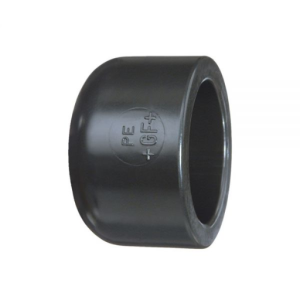
So, when shopping for socket fusion end caps, you must consider some vital factors to help you choose the right product for your needs. To begin with, establish the kind of material required. However, frequently used HDPE is subject to corrosion, and this must be checked by considering compatibility with your piping system or other things. Additionally, one should look at the dimensions from which one should ensure that these end caps match the diameter of the pipes being worked on. Finally, think about the product’s maximum allowable pressure to ensure it meets the requirements imposed by your application field. This will help you identify reliable brands with fair prices and customer ratings. Lastly, consider buying extra fittings plus accessories together; this can make it more accessible during installation procedures. Therefore, follow these steps when choosing your project-tailored high-quality socket fusion end caps, and buy them efficiently, too.
Finding the Right Product for Your Needs
To get the best socket fusion end caps, consider some key factors readily available from leading websites. The first thing to do is to determine the material composition; HDPE is commonly cited as challenging and highly compatible with different systems. Websites like Grainger and ULINE insist on accurate sizing because a suitable tube diameter ensures it fits appropriately, which is essential for retaining a non-leaky joint. Similarly, many sources recommend checking out the pressure rating of the end caps to ensure their functionality in an intended application, as opined by McMaster-Carr, among others. In conclusion, comparing product specifications and customer feedback across several platforms will enable you to make an informed choice specific to your project needs.
Comparing Prices and Quality
When comparing prices and quality for socket fusion end caps, it’s vital to consult reputable sources.
- Grainger: It offers many socket fusion end caps with detailed product descriptions and competitive pricing. Client reviews mostly emphasize its quality and long-lasting components, making it preferable among contractors.
- McMaster-Carr: McMaster-Carr has an extensive stock range with high-quality standards, providing exact pressure ratings and informing buyers about materials used in manufacturing. They may be slightly more expensive, but quality assurance and availability often makes it worthwhile.
- ULINE: This site advertises socket fusion end caps in various ways, stressing bulk buying options that can sometimes actually lower overall costs. Customers have highlighted fast delivery services and many product ratings and specifications for comparison purposes.
In conclusion, these resources can help you determine the best price/quality mix for your project’s needs.
Top Sellers and Recommendations
- Amazon: With its huge marketplace, Amazon has many vendors who sell socket fusion end caps, and this comes with the advantage of user reviews. What people like about Amazon is that you can send back what you don’t want and get your money back quickly, as well as have your shopping delivered quite fast, thus making it a good one for impulse buying yet maintaining quality.
- Home Depot: Home Depot is known for its wide range of plumbing supplies, including socket fusion end caps. It also provides assistance in its stores, enabling comparison among similar commodities, and can be reached through the Internet. The frequent promotions at Home Depot save users money.
- RS Components: RS Components is notable for its focus on engineering and electronic components and high-quality socket fusion end caps with extensive technical specifications. Due to its commitment to quality assurance and efficient delivery options, it is a reliable distributor for any professional project.
This will help you choose trustworthy platforms on which to purchase cost-effective socket fusion end caps that meet your project requirements and receive high-quality customer care services.
Detailed Description of Socket Fusion End Caps
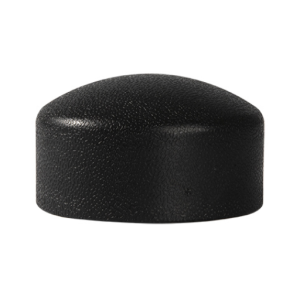
Socket fusion end caps represent a kind of specialized fittings used in plastic pipe systems, especially those made up of polyethylene or polypropylene. As such, they create an air- and water-tight seal when fitted onto pipe ends, preventing gas or liquid escape from the same pipe. To form a strong bond, it is necessary to heat both pipe ends and fittings involved in the process above a specific temperature, but everything should be done quickly to cool down together afterward. This technique is preferred because it is simple but, at the same time, practical enough to produce a joint that retains the integrity of the piping system. Socket fusion welding technology makes available different size variations according to pressure rating, which is applicable for residential purposes, hence commercial ones, since these come with a long life span in plumbing applications.
Technical Specifications and Dimensions
These are available in various sizes and dimensions, fitting different pipe systems. This is usually measured from 20mm to 110mm and has pressure ratings of about PN6 to PN16, depending on the specific application requirements. Common materials include high-density polyethylene (HDPE) or polypropylene, which have good resistance to solvents and are very durable. Therefore, it is vital that sizing matches up with existing pipe dimensions to maintain optimum performance. Also, end caps are often sold with recommended temperature settings and heating times for socket fusion to ensure a strong joint. Hence, while selecting a socket fusion end cap, it is vital to consult technical datasheets from reputable suppliers to confirm compatibility with project specifications.
Materials Used in Manufacturing
Socket fusion end caps are mostly made of high-density polyethylene (HDPE) and polypropylene because they have excellent chemical resistance, tensile strength, and durability. In summary, HDPE can handle impacts and stresses, thereby making it suitable for many applications in residential homes and commercial buildings. Polypropylene also resists fatigue more effectively than other materials, reducing the likelihood of breakage and increasing the life span of such fittings. Additionally, light in these materials makes their installations easier in compliance with plumbing industry requirements and standard guidelines governing fluid management systems used in various setups, including municipal services like wastewater treatment plants. Moreover, some manufacturers incorporate UV stabilizers or stabilizers into these materials, thus preventing degradation due to light effects over time and ensuring that socket fusion end cups are efficient within multiple environments with diverse climatic conditions.
Comparing HDPE, PP-RCT, and Other Materials
Comparatively, HDPE and PP-RCT have certain advantages in terms of piping applications. The former is known for its toughness, resistance to impact, and ability to sustain various temperatures, whereby it works well in high-pressure conditions. Conversely, the latter has better thermal stability and crack resistance under stress; hence, it finds use at higher temperatures with excellent durability characteristics. Alternatively, PP-RCT has conventionally better welding abilities; thus, installation becomes more effortless, unlike polypropylene. It must be noted that every material has its own peculiar merits, which makes it more suitable depending on its application purpose, project requirements, or environmental conditions, thus making it necessary to select the right one to achieve maximum performance and long-term serviceability of fluid management systems.
Payment and Shipping Information
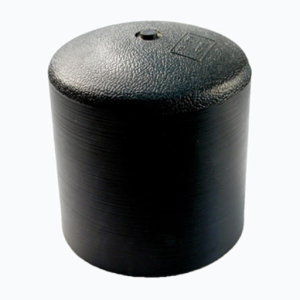
We accept multiple ways of paying, including credit cards, PayPal, or bank transfers for your convenience. Our financial transactions are all secure and private, so your financial information is always protected. We usually ship within 3-5 business days after confirming your order. Standard shipping or expedited delivery options may vary. After dispatching it, an email will be sent to you giving a tracking number; however, until it arrives at an address you have specified, you can track its progress through this unique code via the email alert system provided by our customer service team for further queries on payment or shipment confirmation, please do not hesitate to contact our support service.
Accepted Payment Methods
To suit their preferences, our customers have a variety of payment methods that we accept. These include;
- Credit and Debit Cards: We accept Visa, MasterCard, American Express, and Discover, among other credit cards, to make checkout simple.
- PayPal is also an online wallet option, which is preferred by many due to its convenience and security regarding bank details.
- Bank Transfers: We support bank transfers as one of our payment methods. Provide correct information for promptness.
If you have any questions regarding these payment methods or need help with a particular transaction, please consult our customer service team.
Shipping Options and Delivery Times
Our customers have different needs, so we offer various shipping options. They usually consist of the following:
- Standard Shipping: This option would typically involve 5-7 business days for delivery and is relatively cheap and hence considered a cost-effective way of receiving items bought. It is good if you are not in a hurry, though
- Expedited Shipping: Faster, as the name suggests, delivers within 2-3 business days, making it perfect for people who want their stuff sooner than usual.
- Next-Day Delivery: For those who are in a hurry, next-day delivery options exist, thereby ensuring that your order arrives the next day after being dispatched immediately or instantly.
The time taken for shipping is estimated since it varies depending on location and the method used. Tracking details will be provided so you can trace your parcel’s movement until it reaches your doorstep. If you have any more inquiries about the shipment duration or need assistance with your order, please forward them to our customer service department.
Return and Refund Policies
We are aware that on certain occasions, you might need to return a product, and we want to make this process easy for you. Our customers are allowed to return goods within 30 days of receiving them for a complete refund or exchange as long as they are in their original condition and packaging. To begin returning your purchase, please call our customer service team with your order number.
Refunds will be processed within 7-14 business days of receiving the returned item. Please be aware that returns may incur shipping charges, depending on the reason for returning the product. An exception might be made for final sale items or products that have been opened or used. We try to answer all inquiries promptly, so do not hesitate to contact us if anything is unclear about your refund or return.
Related Products
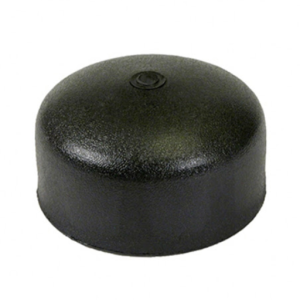
We also have other complementary products you can buy alongside what you just ordered to improve it. Look at our accessories section, where you can find protective cases, chargers, and many more things explicitly designed for your device. You may also wish to check out some top-rated models with excellent customer feedback based on their durability and performance. If you would like more information about any of these products or help selecting one, please contact our customer service team, who will provide personalized recommendations.
Similar Products You Might Like
If you want something to match your interests, for instance, several choices can make it better. Here are some recommendations:
- Premium Wireless Headphones: These will give you superior sound quality with noise-canceling properties that promise a premium listening experience.
- Smartphone Accessories Bundle: It includes a fast charger, screen protector, and tough case to protect and fully charge your device.
- Portable Bluetooth Speakers: These handy, quality speakers were designed for mobility instead of compromising the sound performance.
If you need more personalized suggestions or assistance finding the right products, do not hesitate to contact our customer service department!
Comparing Socket Fusion with Butt Fusion
Socket fusion and butt fusion are two popular methods used to connect polyethylene pipes, but they each have their benefits and applications.
Socket Fusion—This process involves heating the pipe ends of two segments before fusing them together homogeneously. For this reason, it is usually preferred when working with small-diameter pipes, as it allows accurate alignment during joining. A strong, leak-proof joint follows the temperature variation plan involving controlled heating followed by a cooling phase.
Butt Fusion, conversely, is commonly applied in larger-diameter pipe connections. In this case, pipe ends are brought side by side and heated simultaneously before being forced together, creating a weld. This method allows for large volumes of materials and is often used in permanent installations where durability is a significant concern.
The choice between socket fusion and butt fusion largely depends on specific project requirements, including pipe size, application, and joint strength required. Each has been proven effective in different contexts, making them indispensable techniques in the piping industry.
New Products and Innovations in Socket Fusion Fittings
Recent developments in socket fusion fittings aim to make them easier to use, more efficient, and accommodate a broader range of pipe sizes. As such, manufacturers are incorporating more substantial materials into their fittings that will not get eroded by chemicals since they are used in multiple industries. On the other hand, quick-connect socket fusion fittings have reduced installation times and improved joint reliability. Besides, technology has resulted in intelligent fusion machines with temperature and pressure sensors to check fusions’ strength and stop human mistakes. This demonstrates an ongoing commitment toward enhancing the dependability and effectiveness of piping systems through these latest developments.
Reference sources
- ASTM International – Standard Specification for Polyethylene (PE) Plastic Pipe and Fittings Materials
https://www.astm.org/Standards/D3350.htm
This standard specifies the requirements for polyethylene materials used in piping systems, including Socket Fusion End Caps. - ASTM International – Standard Specification for Socket Fusion Tools for Use in Socket Fusion Joining of Polyethylene Pipe or Tubing
https://www.astm.org/Standards/F1056.htm
This document provides the standard specifications for socket fusion tools, which are essential for ensuring the proper joining of polyethylene pipes and fittings, including HDPE Socket Fusion End Caps. Understanding the equipment and techniques involved is crucial. - JM Eagle – Polyethylene Fittings
https://www.jmeagle.com/sites/default/files/PEFittings_web.pdf
This document outlines various polyethylene fittings, including socket fusion end caps, their standards, sizes, and applications. It is a valuable resource for anyone needing detailed guidance on these fittings.
Related Articles: Socket Fusion End Cap Performance Description



